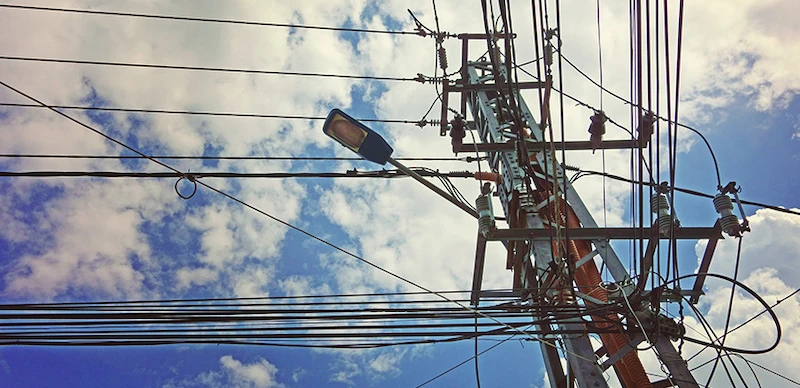
Mr. Electric highlights key dangers of utility poles and how to stay safe when around them.
|
Electricity is an important part of our everyday lives, but it's also extremely dangerous. If you have a utility pole near your home, keep your distance. If a downed power line occurs nearby, never approach the area. Learn more about utility poles and what makes them dangerous so you can take steps to keep you and your family safe.
Facts About Utility Poles
- While a standard pole is 35 feet tall, poles can range in height from 20 to 100 feet tall.
- Wood poles are typically made from Douglas fir, southern pine or western red cedar. These can last 30 to 40 years.
- More modern materials for utility poles include concrete, steel or fiberglass. These last much longer.
- Poles are buried six feet in the ground and spaced about 125 feet apart.
What's on a Utility Pole?
- Transmission wires: These high-voltage wires carry electricity at 69 to 500 kilovolts on its way to substations where the voltage is reduced.
- Distribution wires: Once the power is reduced at substations to between 4 and 25 kilovolts, distribution lines carry power to homes and businesses.
- Communication lines: These carry cable television, broadband and telephone wires to the end user.
- Transformer: The large, metal, canister-shaped transformer converts high voltage to low voltage needed for home and business use.
Why are Utility Poles Dangerous?
- Leaning poles: Whether caused by old age, insect damage or high wind, leaning wooden utility poles are liable to crack. When they do, the transformer comes crashing down, potentially damaging property or hurting someone in the process.
- Dangerous voltage: Power lines strung between utility poles in urban areas are typically 4 to 25 kilovolts. Even at this lower voltage, touching a power line can causes severe injuries. Sometimes the wound left by electricity exiting the body can cause such severe damage that a hand or foot must be amputated. An electric shock this large can also stop your heart. You don't even have to touch an actual wire to receive a shock. Tree branches that come in contact with a power line can energize the tree and the ground around it, creating a very hazardous situation.
- Stray voltage: When the insulation surrounding old wires underground begins to degrade, the wires become exposed to the soil. Stray electrical currents can travel through the soil and into metal objects on the surface, including steel utility poles, streetlights, fire hydrants and manhole covers. Simply touching these surfaces, especially with bare feet or during a rainstorm, can cause an electric shock to rattle your body. People and pets have been hurt or killed by such stray voltage.
- Chemical toxins: Wood utility poles are treated with preservatives to help them last longer and keep bugs away. Unfortunately, these preservatives contain dangerous chemicals that harm humans, animals and the environment. Many cause cancer, birth defects, reproductive problems and nervous system damage.
If you're concerned about a leaning utility pole near your home, or you suspect another problem such as stray voltage or chemical treatment is putting you or your family in danger, please contact Mr. Electric®. We can perform electrical safety services to help prevent a disaster from occurring. In addition, read about the dangers of hidden electrical wires from our fellow Neighborly brand, Rainbow International - the restoration experts.

